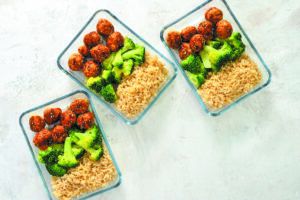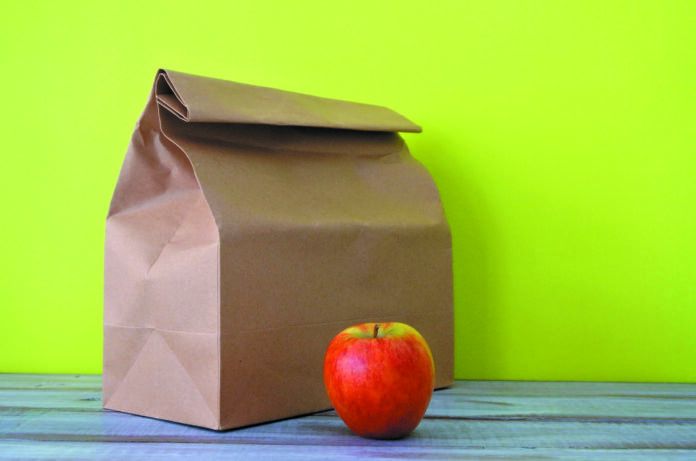Whether you’re off to work, school, or a day trip, packing a healthy lunch doesn’t have to be difficult or time consuming. While it can be tempting to turn to time-saving convenience foods, these often highly processed items may not be the best choice (see this month’s Special Supplement for more information).
Pack Your Lunch. Preparing lunch at home means you control what you’re eating, which is likely healthier, more nutritious foods than premade and prepackaged options.
Keep it Flowing. Carry a refillable water bottle to enjoy with lunch and throughout the day, as it’s the best way to stay hydrated.
Store It. Keep different sized reusable food storage containers to pack leftovers and other lunch items. Be sure they fit into your lunch box, bag, or cooler. Don’t forget reusable utensils and napkins.
Prep Ahead. Plan to cook enough so there will be leftovers, and pre-package lunch items, like cut veggies and fruit, nuts, granola, whole grain crackers into grab and go individual containers or bags.
Mix & Match. Get creative by trying different combinations of your favorite lunch items, such as trying hummus on a cracker, as a dip for veggies or poultry, or as a sauce or dressing on pasta or salad.
Keep it Cold. Don’t let perishable food sit at room temperature for more than two hours total.
The best approach to a wholesome lunch on-the-go is to pack it yourself. Stock a variety of reusable storage containers to fit larger main dish items like salads, grain bowls, or a sandwich, as well as smaller containers for cut vegetables, fruit, nuts, or dip. A bento-style lunchbox has built-in fillable food compartments, which makes for an easy way to pack your lunch. It’s a good idea to have a set or two of utensils—fork, spoon, knife—and a stash of napkins (or a reusable cloth napkin) handy. Don’t forget to hydrate! Make it easy to sip throughout the day by carrying a refillable water bottle.
Cook Ahead. Preparing meals ahead of time is a great, time-saving strategy. Make more

Make extra dinner and portion leftovers for future grab-n-go lunches.
dinner than you or your family will eat in one meal, then pack leftovers in portion-sized containers to take for lunch tomorrow, or label and freeze for next week, or even next month. Simply move a container to the refrigerator the night before to begin thawing.
Batch cooking on the weekend is also a great option for make-ahead lunches. Dishes like casseroles, pasta dishes, soups, chilis, and stir-fries are ideal because recipes can be easily doubled, divided, and stored.
If you don’t want to eat the same meal two days in a row or won’t have access to a way to reheat dinner foods, there are plenty of ways to add variety. Mix veggies, protein, and grain from your dinner plate and dress with vinaigrette for a tasty grain salad or put them over salad greens and pack the vinaigrette on the side.
Stock Staples. For quick lunch options that don’t involve cooking ahead, keep healthy grab-and-go favorites on hand. Stock up on fruit (but not more than you can eat, to prevent waste). Hard boil some eggs and pre-cut a variety of veggies. Slice hard cheese or purchase cheese sticks. Divide trail mix, nuts, granola, and whole grain crackers into smaller food storage containers or reusable storage bags so they can go directly and effortlessly from pantry to lunchbox. Portion out bean dips, nut butter, and plain yogurt, as well. Many of these items can be purchased prepackaged in individual servings. These don’t save on money, but they do save on time. Just be sure to read package ingredients to avoid or limit unwanted ingredients like added sugar and salt.
Aim for a meal that is half vegetables and fruits, one quarter whole grain, and one quarter protein.
To keep your food safe from bacteria, refrigerate your lunch so it doesn’t get above 40 degrees for more than two hours.
With these ideas and guidelines in mind, a healthy grab-and-go lunch can be a breeze!
























